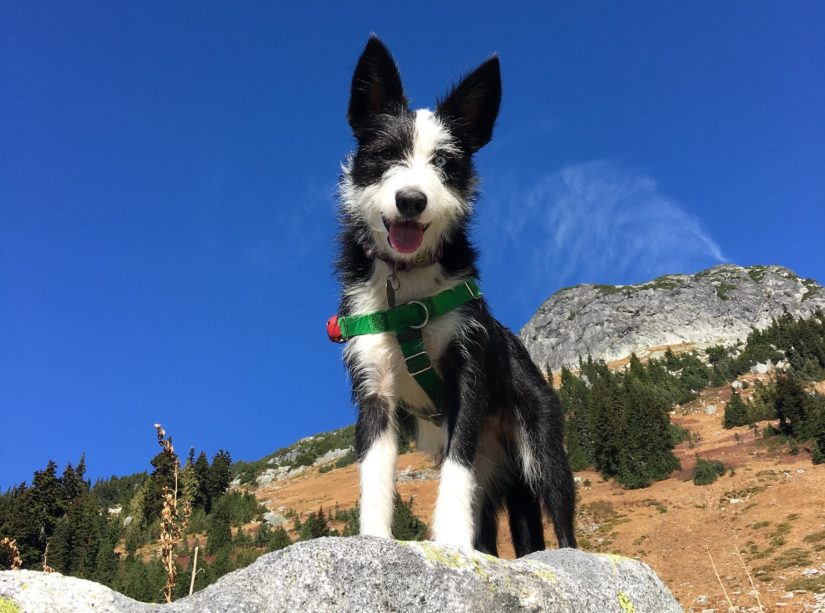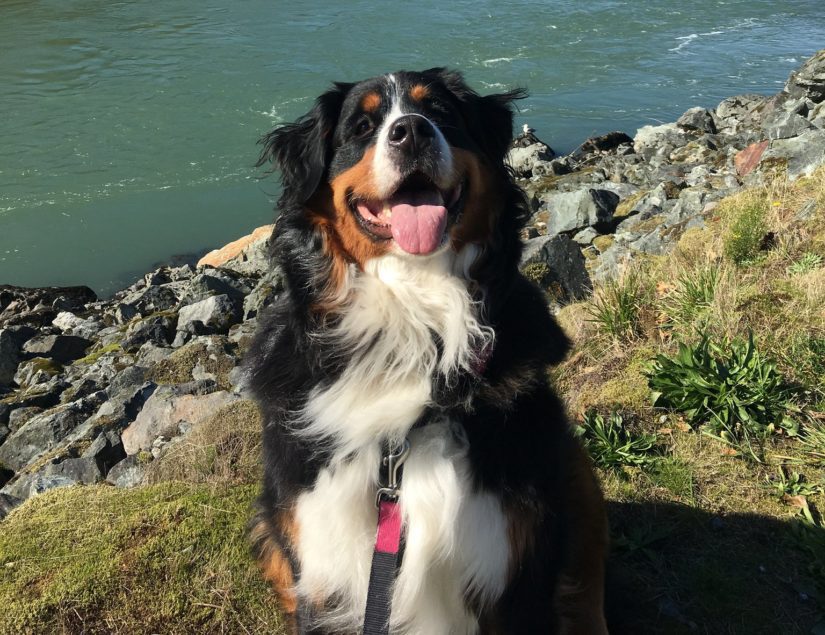Summertime is always a fun season to spend outdoors with your pooch. Why not make it more special and productive by teaching your dog some useful new skills?
“Learning new skills help build confidence for the learner, or in this case, the dog,” says AnimalKind accredited trainer Maren Bruun from Paw In Hand in Squamish. “For the guardian, you have something to direct the dog to. Instead of asking ‘what should I do?’ in a certain situation, you now know what ‘to do.’”
Because these skills help instill confidence they can be used for all dogs, says Bruun. And if you’re worried that your dog might not like to learn new skills, don’t be. According to Bruun, scientific research on animal behaviour has shown that when we teach things with positive reinforcement, then dogs love to learn.
“Effective training means we are making good associations with positive feelings, we are being careful to have a high enough training success rate that the dog is successful and that both of you enjoy the process,” she says.
Bruun shares simple and helpful training techniques you can use to teach your dog the skills at home that will result in more enjoyable time on future outdoor activities with you and your four-legged friend.

First thing’s first: food treats
“When we figure out what a particular dog is motivated by and find a way to use that to our benefit, then that helps the dog learn,” says Bruun. “Food is the easiest motivator to start the process with because we can get a hundred repetitions of a desired behaviour during a single training session or day.”
And let’s face it: whether person or animal, we’re all more likely to do something a hundred times if there’s a positive outcome attached to it.
Bruun recommends identifying your dog’s favourite food treats and once you know the type of treats that will motivate your dog the most, keep them handy around the house, so you can take advantage of every opportunity for training.
Start with a simple cue: positioning or “heel”
A cue is the simply the word or signal you use to ask your dog to perform a behaviour. Starting with simple cues makes the journey of training more enjoyable.
According to Bruun, working with positioning is a great way to help your dog improve their walking skills, and also helps decrease the number of times they might trip you up while you hike!
“Teaching your dog to move into position on the left side of your body or on the right side of your body is a great skill to get started on while indoors,” says Bruun. “Use your body language and a hand signal, such as patting your leg to entice your dog to your side. Mark the correct behaviour by saying ‘yes’ and reward them with a treat when they’re in position.” Then add a name to the behaviour as the verbal cue.
It is also important to remember to make it fun, says Bruun.
“Make a game of it! Name it whatever you want – I use ‘heel’ and ‘side’ but use what makes sense to you and even be creative. Gone are the days of short, sharp, military commands.”

Bruun says she also uses “other side heel” or “heel right” or “heel left”. Teach your dog “heel” while walking in the city on a busy sidewalk or out hiking with your pooch. For example, you’re on the trail, passing other hikers, and you want your dog on the other side of you or maybe on the other side of the frog pond. “The technique helps them to become more comfortable on either side,” says Bruun. “You use it if you want to pass the more distracting object, person or animal. I want my dog to be just as comfortable on one side than the other so it’s not a stressor.”
Next step, “middle” or “peek-a-boo”
“Having your dog come into position between your legs can be a great foundation skill to hone at home,” says Bruun. “Your body language may look a bit contorted in the beginning trying to get them to peek at you from behind, but after a few successful peeks for treats, they will love the new trick!”
https://www.youtube.com/watch?time_continue=20&v=xiPHZs4hqyc&feature=emb_logo
Bruun says this is a simple and clear skill that helps the dog feel secure. “They are in a definitive position which might make a timid dog feel more secure. Or for the dog who’s a little pushy, it has clear criteria as to what to do.”
You can use the cue while outdoors with your dog on a narrow trail. “If you need to make a quick decision about what to do with your dog and you don’t have a lot of space that’s a very clear direction,” says Bruun.
You might also want to use it while paddleboarding with your dog with an optional sit cue.
Teach your dog “home base”
Home base is a technique that signals to your dog to sit in front of you, or on a designated spot, such as a mat on the floor. It is useful to redirect your dog away from a distraction.
Bruun says you set the cue with your body language with placing your shoulder to the distraction, and your core towards your dog. This way your dog will remain focused on you rather than the distraction.
“This cue tells the dog, ‘Focus on me, who cares about that other thing!’” says Bruun. “With the core we are engaged with our doggy partner. So if there’s a distraction that you don’t want your dog to chase after or engage with, this technique helps them to focus on you.”
For example, you’re out on a busy trail and you see a cyclist coming towards you. By using “home base” you cue your dog to focus on you and not the distracting cyclist.

After some practice, Bruun says, “All three of these skills can be mixed and matched. Knowing that your dog will happily come to whatever position you ask will allow you more freedom to enjoy more places together with your well-trained fur friend!”
Learn more training tips from dog trainers or find the nearest AnimalKind accredited trainer and start enjoying a fun and productive summer with your dog.

